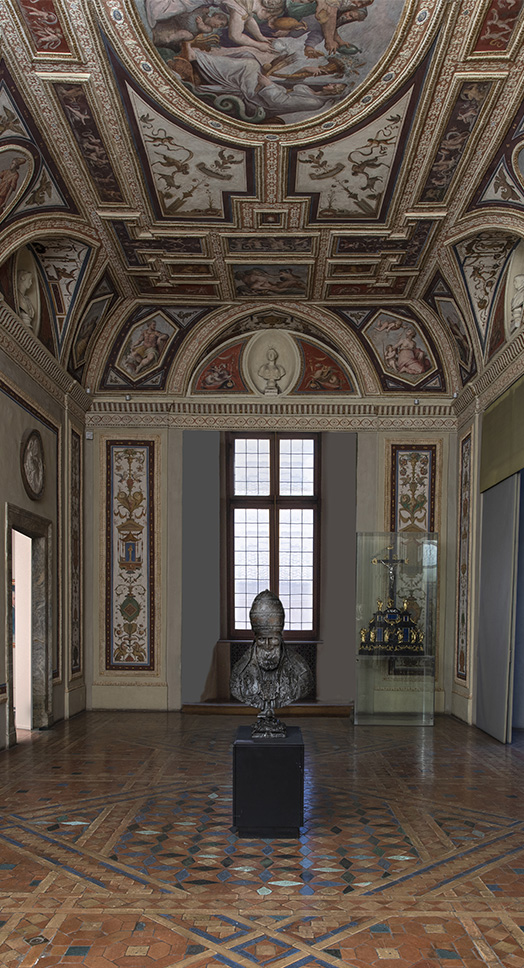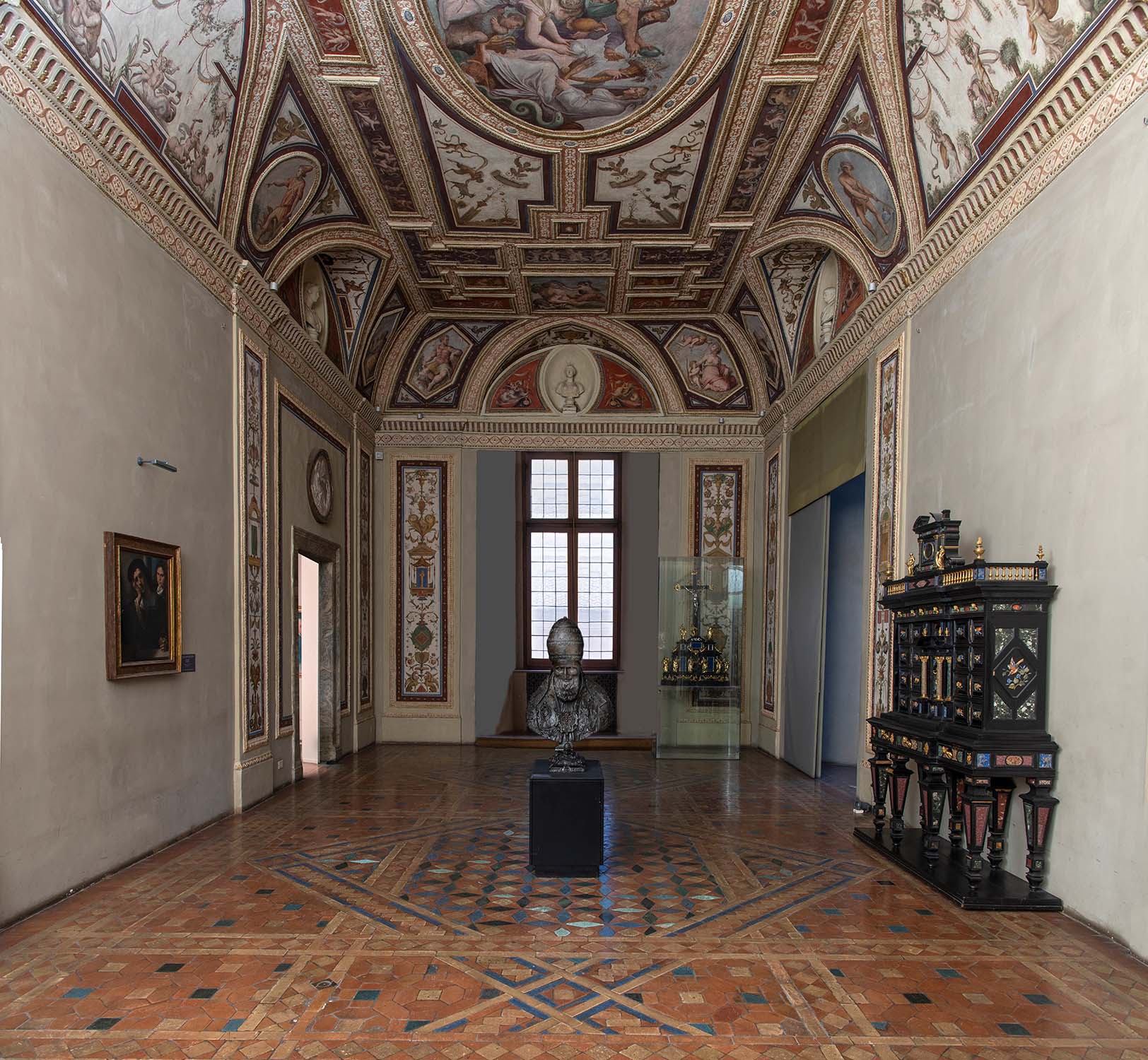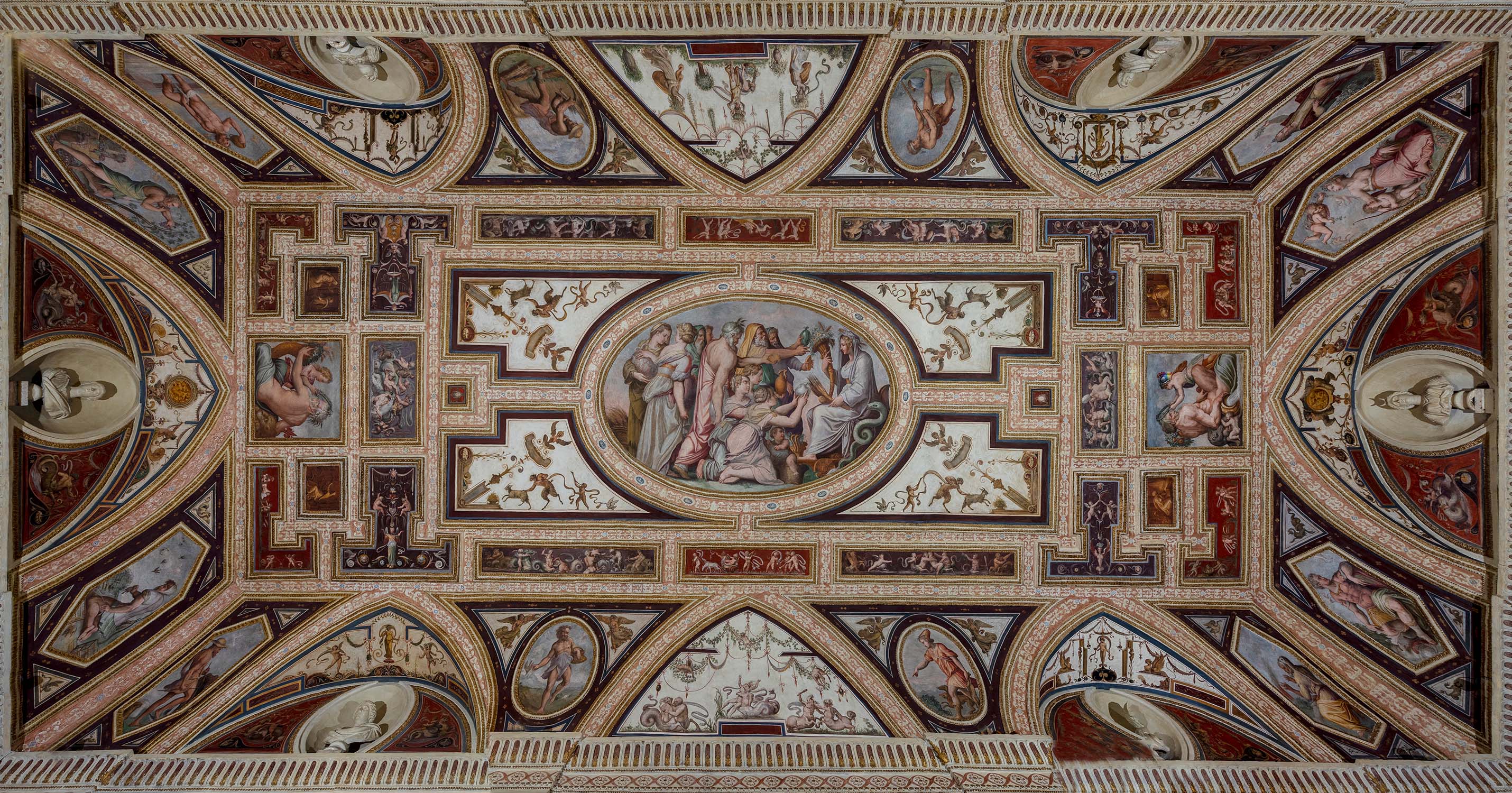A painting by Giorgione still shrouded in mystery and the spectacular ceiling designed by Giorgio Vasari for Pope Julius III’s banker

This room was originally part of a larger space: it was generally referred to as the Pisana Room, because it was built in 1564 by Cardinal Francesco Pisani (1494-1570) at the expense of the Republic of Venice, as a reception space for the titular cardinals of San Marco.

The room took on its current appearance, as well as its present-day name, with the installation of the ceiling, which came from Palazzo Altoviti near the Sant’Angelo Bridge. The allegorical paintings, inspired by the myth of the goddess Ceres and the months of the year, date back to 1553: Giorgio Vasari (1511-1574) painted them in fresco on behalf of Bindo Altoviti (1491-1557), the Florentine banker of Pope Julius III (1550-1555). Its arrival at Palazzo Venezia dates back to 1917: a few years later, between 1924 and 1929, the painter Torello Rupelli, under the supervision of the director Federico Hermanin (1868-1953), incorporated them into this room, along with new frames and, along the walls, with Renaissance-style pilasters decorated with grotesques.

The room, now part of the museum’s exhibition route, houses some of the most important works preserved by the palace. Highlights include the Bust of Marino Grimani by Alessandro Vittoria (1525-1608) and the Bust of Pius V.